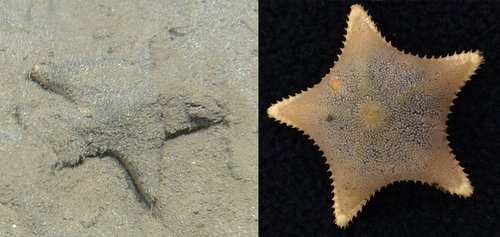
Contact
Cruise Leader
Pål Buhl-Mortensen
Communication Advisor
Beate Hoddevik
+47 908 21 630

Published: 07.04.2017 Updated: 24.10.2019

These little stars are important as they burrow down into the mud, helping to oxygenate the sediment and stimulating microbial growth, which contributes to nutrient cycling and release. They also feed on the organic matter present within the mud, hence the name Mud Star.
I am interested in how Mud Stars from different areas behave in terms of their bioturbation (how they burrow and mix sediments). As part of this cruise I have been running onboard experiments to see whether Mud Stars from 2 different regions (one south of the polar front and one on the polar front) vary in their bioturbation.
To do this I kept the stars in little aquaria, partly filled with mud. To track their movement I used coloured particle tracers called ‘luminophores’, which I placed over the surface of the mud in a 2-3 mm layer. I then left the animals for 5 days to go about their business.
I then photographed the sediment under ultra-violet light. This makes the luminophore particles fluoresce. I can then easily identify them compared to the surrounding sediment using an automatic computer program. From this I can calculate the depth to which the mud stars mixed the luminophores particles into the sediment.

When I return to the UK I will also look at the reproduction and population genetics of the mud stars to see whether any differences are due to short term individual adaptation, or long term genetic variation.